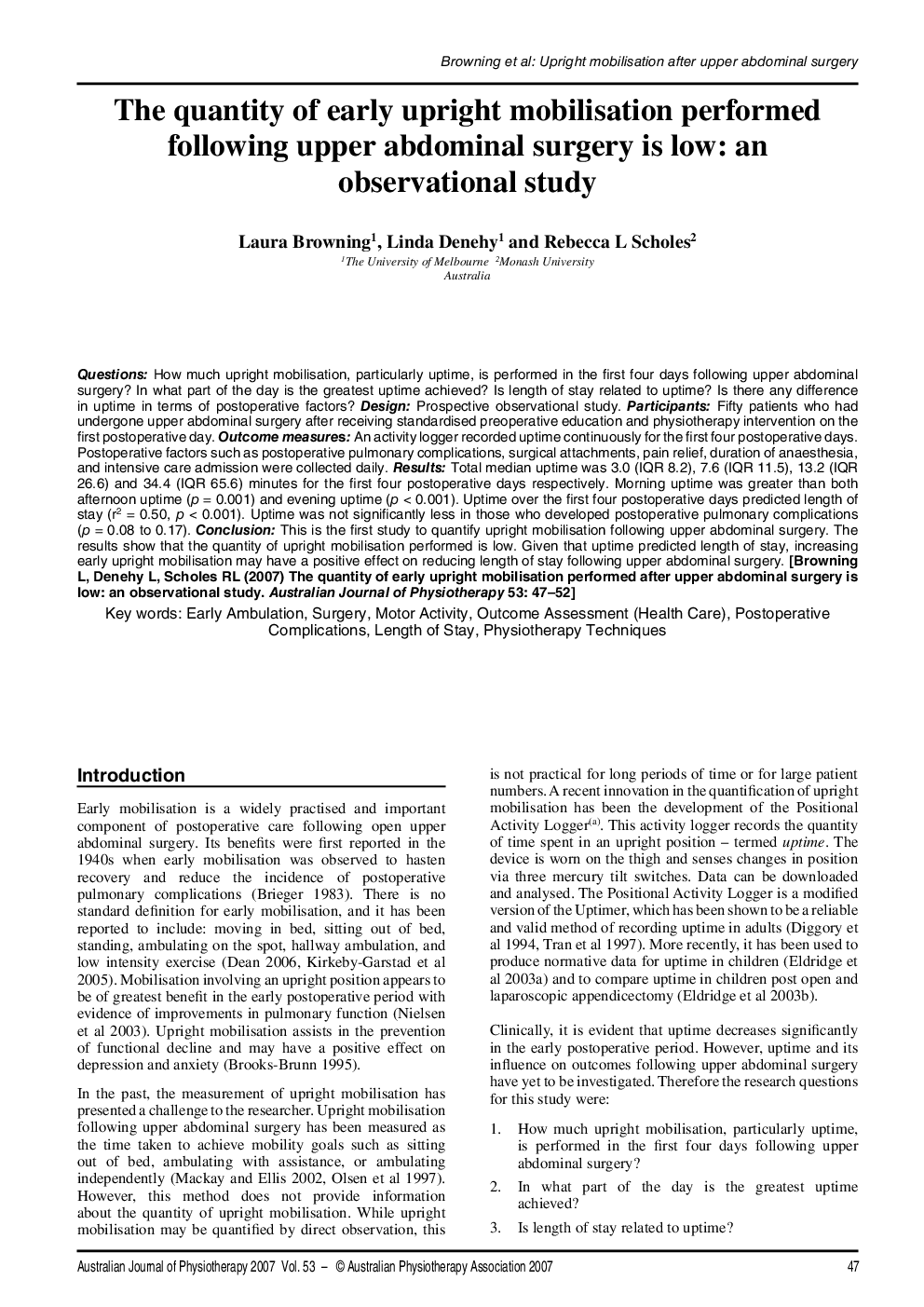| Article ID | Journal | Published Year | Pages | File Type |
|---|---|---|---|---|
| 2699235 | Australian Journal of Physiotherapy | 2007 | 6 Pages |
QuestionsHow much upright mobilisation, particularly uptime, is performed in the first four days following upper abdominal surgery? In what part of the day is the greatest uptime achieved? Is length of stay related to uptime? Is there any difference in uptime in terms of postoperative factors?DesignProspective observational study.ParticipantsFifty patients who had undergone upper abdominal surgery after receiving standardised preoperative education and physiotherapy intervention on the first postoperative day.Outcome measuresAn activity logger recorded uptime continuously for the first four postoperative days. Postoperative factors such as postoperative pulmonary complications, surgical attachments, pain relief, duration of anaesthesia, and intensive care admission were collected daily.ResultsTotal median uptime was 3.0 (IQR 8.2), 7.6 (IQR 11.5), 13.2 (IQR 26.6) and 34.4 (IQR 65.6) minutes for the first four postoperative days respectively. Morning uptime was greater than both afternoon uptime (p = 0.001) and evening uptime (p < 0.001). Uptime over the first four postoperative days predicted length of stay (r2 = 0.50, p < 0.001). Uptime was not significantly less in those who developed postoperative pulmonary complications (p = 0.08 to 0.17).ConclusionThis is the first study to quantify upright mobilisation following upper abdominal surgery. The results show that the quantity of upright mobilisation performed is low. Given that uptime predicted length of stay, increasing early upright mobilisation may have a positive effect on reducing length of stay following upper abdominal surgery.
